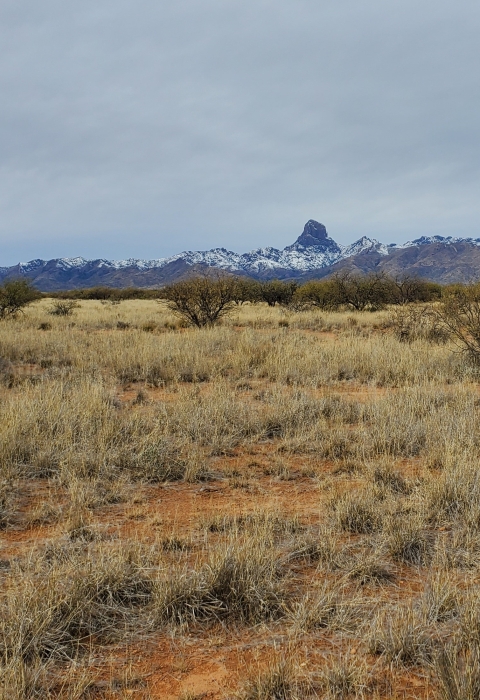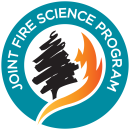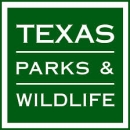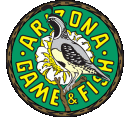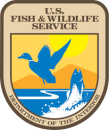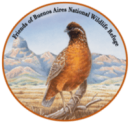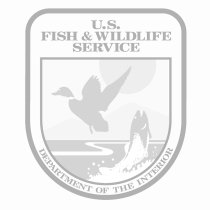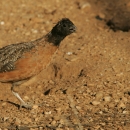Location
States
ArizonaIntroduction
The masked bobwhite quail (Colinus virginianus ridgwayi) is a subspecies of the northern bobwhite quail, a popular game bird native to the Sonoran desert of southern Arizona and northern Mexico. By 1900, the masked bobwhite quail was extirpated (locally extinct) in the United States due to a combination of habitat loss from livestock overgrazing and the effects of prolonged drought. In addition, invasive grass species, including buffelgrass (Pennisetum ciliare) and Lehmann lovegrass (Eragrostis lehmanniana), furthered habitat degradation within their native range. These grasses were originally introduced to increase forage and vegetation cover, and control erosion.
Buenos Aires National Wildlife Refuge (Refuge) was established for the reintroduction of masked bobwhite quail and broader restoration of the natural landscape. Currently, there is a small established population on the Refuge, which abuts the US-Mexico border. Wild populations were seen in Mexico in the early 2000s, but they have not been observed since 2007. There are no known reintroduction or supplementation efforts to wild populations in Mexico. Recent audio recordings suggest that masked bobwhite quail in Mexico may still be present in low numbers in the wild, however biologists are reluctant to confirm species identification without an accompanying visual observation.
Key Issues Addressed
The masked bobwhite quail is endangered due to a history of overgrazing followed by historic droughts in the 19th century as well as the introduction of two non-native grass species: buffelgrass and Lehmann lovegrass. This combination degraded habitat for masked bobwhites by reducing native vegetation needed for diet, nesting, and shelter. Habitat degradation has also reduced invertebrate communities which are a critical food source for quail after hatching. In contrast to other quail species in the Southwest, masked bobwhites do not breed in the spring. Instead, breeding is triggered by increasing humidity that arrives at the onset of monsoon season. In recent years, the monsoonal moisture has been reduced below the levels needed to trigger reproduction.
The Buenos Aires National Wildlife Refuge is managed to benefit this species through a combination of captive rearing and releasing masked bobwhite quail and restoration of historic habitat conditions. Since the 1850s, the land encompassing the refuge has been altered by multiple events of livestock grazing and failed erosion control by introduced invasive species invasive species
An invasive species is any plant or animal that has spread or been introduced into a new area where they are, or could, cause harm to the environment, economy, or human, animal, or plant health. Their unwelcome presence can destroy ecosystems and cost millions of dollars.
Learn more about invasive species . In 1985, Congress authorized the USFWS to purchase this land as the Buenos Aires National Wildlife Refuge, and subsequent habitat restoration efforts have taken over 30 years to support their goal to reintroduce masked bobwhite quail populations.
Project Goals
- Raise bobwhite quail translocated from Sonora, Mexico, in captivity before releasing them into the wild to establish populations in the United States.
- Restore native habitat, using the best available science, to allow masked bobwhite quail to survive and breed in the wild, establishing two viable populations in the United States. Work with the Mexican government to reintroduce two or more populations in Mexico.
- Increase native bunchgrasses, forbs, and shrubs while reducing mesquite (Prosopis velutina) and Lehmann lovegrass cover. Specific habitat requirements for masked bobwhite quail are:
- Nesting Cover – 10-20% of the area to be covered by perennial bunch grasses. Preferred species would include sideoats grama (Bouteloua curtipendula), sand dropseed (Sporobolus cryptandrus), green sprangletop (Leptochloa dubia), bush muhly (Muhlenbergia porteri), plains bristlegrass (Setaria vulpiseta), and alkali sacaton (Sporobolus airoides).
- Woody cover – Woody cover “thick enough to conceal quail from raptors and low enough to the ground to give thermal and visual protection”. Woody cover should be distributed across 20-40% of each acre and be composed of 5+ species that provide shade, food and screening. On the Refuge, suitable woody cover may be provided by lotebush (Ziziphus obtusifolia), wolfberry (Lycium spp.), hackberry (Celtis spp.), acacia (Acacia spp.), desert broom (Baccharis sarothroides), algerita (Mahonia trifoliolata), saltbush (Atriplex spp.), and mesquite.
- Food – High quality habitat provides a reliable and diverse year-round food supply composed of seeds, mast and insects. On the Refuge, manage for at least 5 food-producing plant species well distributed across each acre. Manage so that food is available in every square yard, with insects abundant during the summer.
- Interspersion – Grasses, forbs and shrubs should be distributed in a small-scale mosaic. Woody cover should be well distributed so that no point is more than 20 yards from such cover.
Project Highlights
Multi-Species Benefits: Restoration work benefits not only masked bobwhite, but a multitude of birds as well as pollinating insects.
- Captive Breeding and Reintroduction: Quail are bred in captivity at the Refuge, as well as at the George Miksch Sutton Avian Research Center in Bartlesville, Oklahoma and the African Safari in Puebla, Mexico. Initial releases were attempted in the 1970s, but were unsuccessful. Releases were re-initiated in 2017. In 2018, 500 birds were released onto the Refuge between late July and early September. Biologists estimate that 80-100 survived to the summer of 2019. This is comparable to overwinter survival rates for other species of quail, which are typically 20-30%.
- Learning from Foster Parents: Sterile Texas bobwhite quail are used on the Refuge to help masked bobwhite quail adapt to their surroundings and learn how to survive in the wild. The foster dad is introduced to newly-hatched quail, then they bond for a week. After bonding, the group is released and is tracked with a transmitter placed on the foster dad.
- Benefits for Additional Species: Restoration work will benefit not only masked bobwhite, but also Montezuma, scaled, and Gambel’s quail which are important game species in Arizona. Habitat improvements can also benefit pollinating insects.
- Informed Restoration Planning: Beginning in 2014, GIS and remote sensing techniques were applied to map environmental conditions, primarily precipitation and temperature, and prioritize restoration sites for different habitat types.
- Prescribed Fire: Controlled burns are conducted annually on the refuge in an attempt to decrease woody cover and increase native vegetation diversity.
Lessons Learned
Successful species and habitat recovery takes time. Full documentation of recovery efforts is needed to share what works and what does not for masked bobwhite quail recovery. If we do not learn from past actions, we risk duplicating failure. In the case of masked bobwhites, recovery is a cross-boundary effort, and depends on both countries being engaged in the information sharing and learning process.
While long-term success is to-be-determined, the overwintering of masked bobwhite in 2018-2019 was a result of a combination of factors. Winter precipitation promoted vegetation and maintained water sources. Before releases were attempted in 2017, the refuge invested in habitat assessments and a suite of restoration efforts, including revegetation, combating gully erosion, and increasing water availability, to provide suitable habitat. Foster parenting also appears to be improving survival of released birds.
Recovery of the masked bobwhite quail has been, and will continue to be, a learning process. With a limited number of birds, an unlimited number of factors to account for, and changing environmental conditions, a prescription for recovery remains elusive. Released birds are tracked with radio transmitters, and their movement patterns can be used to determine what preferred habitat looks like and inform habitat management.
Renovations made to the captive breeding facility at the Buenos Aires National Wildlife Refuge improved bird health and survival. Indoor breeding pens were made bigger to prevent aggression and stress. The outdoor flight pens were modified to protect the birds from predators, and misters were added to control high temperatures during the summer and aid in native plant growth.
The effects of prescribed fire have been mixed and depend on a complex set of factors including season, weather, previous fire history, and existing vegetation. It has become apparent that very short fire return intervals (e.g. yearly) benefit Lehmann lovegrass and do not promote native herbaceous species.
Next Steps
- Determine the habitat restoration sites and overall habitat needs through a telemetry-based analysis of movement and survival rates
- Continue habitat restoration to improve native vegetation conditions, restore incised washes, and provide additional water for quail. This will include seeding native grasses, forbs and shrubs, converting mesquite trees into a useful, shrubby structure structure
Something temporarily or permanently constructed, built, or placed; and constructed of natural or manufactured parts including, but not limited to, a building, shed, cabin, porch, bridge, walkway, stair steps, sign, landing, platform, dock, rack, fence, telecommunication device, antennae, fish cleaning table, satellite dish/mount, or well head.
Learn more about structure by half-cutting (bending partially cut branches to the ground). Restore the natural sheet flow of water by installing multiple small rock dam structures that force water out of channelized washes - Discontinue quail introduction in one core release area to determine if they are self-sustaining. If not, determine the limiting factors through research, and use the information to determine management actions
- Communicate the latest protocols to Mexico and encourage active species recovery within the State of Sonora
- Utilize the complete analysis of audio recordings in Mexico to determine if quail are still present, and reintroduce quail populations to ranch properties
- Initiate a safe harbor agreement with Altar Valley Conservation Alliance to build landowner support for habitat improvements on private lands that could benefit masked bobwhites
Resources
- Related Case Study on Prescribed Fire and Masked Bobwhite
- 5-Year Review: Summary and Evaluation (2014)
- Plight of the Masked Bobwhite Quail
- Masked bobwhite quail article by Sutton Research Center
- Video: Adoptive Fathers for Masked Bobwhite Quail
- Video: Masked Bobwhite Quail Release
- High Plains National Wildlife Refuge Complex
- Washita National Wildlife Refuge Complex
- Optima National Wildlife Refuge Complex
- FWS Ecological Services Program
- Camou Ranch S.A. de C.V.
Contacts
- Lacrecia Johnson, Zone Biologist, Sonoran and Chihuahuan Deserts, lacrecia_johnson@fws.gov
- Rich Albers, Refuge Manager, Buenos Aires National Wildlife Refuges, rich_albers@fws.gov
- Cassondra Walker, Fish and Wildlife Biologist, U.S. Fish and Wildlife Service, cassondra_walker@fws.gov
Case Study Lead Author
Leah Wilson, CART Undergraduate Intern Northern Arizona University
Suggested Citation
Wilson, L., M. (2020). “Conservation of the Masked Bobwhite Quail.” CART. Retrieved from https://www.fws.gov/project/conservation-masked-bobwhite-quail.
